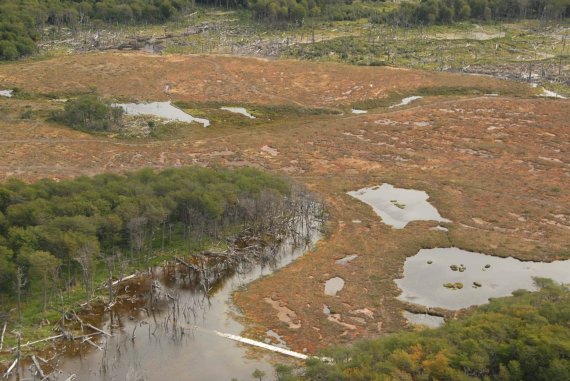PhD student Judith Schellekens used a new method to reveal this history. She looked at the molecular composition, a kind chemical fingerprint, of the peat.
The formation of peat is a complex process. Plants all decompose in the own way, depending on their chemical composition. Their breakdown by micro-organisms also depends very much on the availability of oxygen. In other words: the water table and therefore, the climate. So peat profiles are theoretically a good instrument for reconstructing the climate. In order to read this peat archive, Schellekens used pyrolysis, the fragmentation of organic matter under the influence of heat. The fragments of that process were then sorted, identified and quantified. Per peat sample this process delivered hundreds of fragments which give information about the species of plant in the sample and the degree of decomposition.
Schellekens used core samples from two different, well-documented peat bogs, one in Tierra del Fuego which is dominated by Sphagnum moss, and one in Galicia in Spain which is largely made up of Carex and grassy plant remains. And the method works, judging by the comparison of the results with those of traditional techniques. At the same time Schellekens cleared up a myth. Sphagnum breaks down slowly. The reason, it is generally assumed, is that the plant’s high levels of phenolic compounds protect it from decomposition. But that is not the case. Phenolic compounds actually break down fast, Schellekens discovered. So another mechanism must be responsible for the slow breakdown of Sphagnum moss.
Climate change
The PhD student also discovered that some frequently used biomarkers, substances which indicate the presence of certain plants, get broken down themselves. Meanwhile, the markers for some decomposition processes are influenced by the composition of the vegetation. Reading the peat archive is a lot more complex than was thought and the interpretation of some peat archives therefore needs to be revisited. Explaining the processes in peat is more than a history lesson. A large proportion of the carbon stores on the earth are stored in peat bogs. The disappearance or creation of peat can reinforce or slow down climate change. Knowledge of the processes involved makes it easier to predict feedback loops between peat bogs and climate change.

